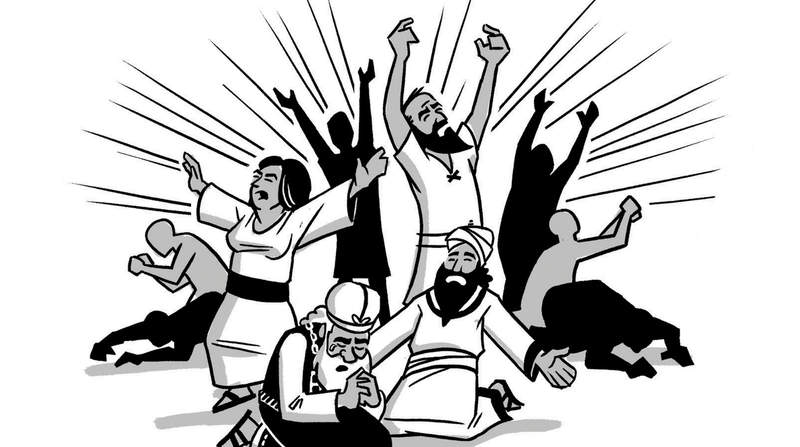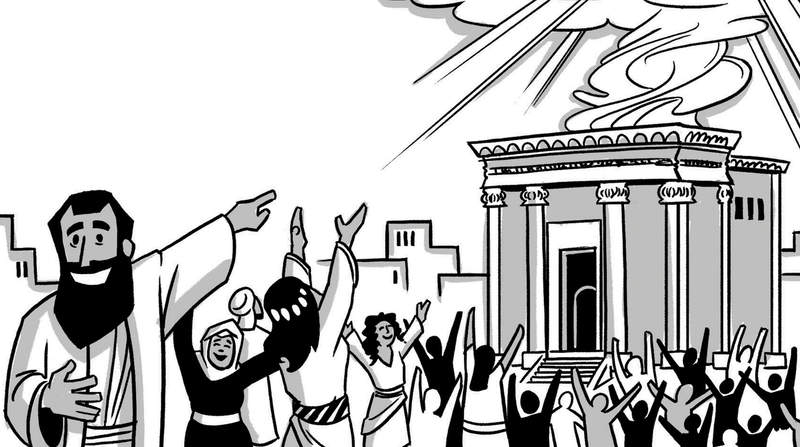The Book of Joel
About

One important aspect of the ancient TaNaK order of the Hebrew Bible is that the 12 prophetic works of Hosea through Malachi, sometimes referred to as the Minor Prophets, were designed as a single book called The Twelve. Joel is the second book of The Twelve.
The book of Joel is a short collection of prophetic poems that are both powerful and puzzling. This book is unique among the books of the prophets for a few reasons, starting with the fact that there’s no explicit indication of when it was written. It’s most likely set during the time period of Ezra-Nehemiah, after the return from the exile, because he mentions Jerusalem and the temple but not a kingdom. Another aspect that sets this book apart is that Joel is clearly familiar with many other scriptural books, as he alludes to or quotes from the prophets Isaiah, Amos, Zephaniah, Nahum, Obadiah, Ezekiel, and Malachi, as well as the book of Exodus. Finally, Joel never accuses Israel of any specific sin. Like the other prophets, he announces that God’s justice is coming to confront Israel’s sin, but he never says why. This is because Joel assumes that, like him, you’ve been reading the books of the prophets and already know all about Israel’s rebellion.
Now, all together, these three features help us understand this fascinating little book a bit better. Joel is a biblical author who was himself immersed in earlier biblical writings. His reflection on them helped him to make sense of the tragedies of his day and gave him hope for the future.
Who Wrote the Book of Joel?
Context
Key Themes
- The Day of the Lord
- Hope of new creation and restoration of the land
- God’s Spirit for all people
Structure
Joel 1-2b: A Past and Future Day of the Lord
In chapters 1 and 2, Joel focuses on “the Day of the Lord.” This is a key phrase in the prophets that describes events in the past when God appeared in a powerful way to save his people or to confront evil, like the plagues in Exodus. But these past events serve as pointers for the prophets to a future time when God will once again confront evil and bring salvation to the entire world. These opening chapters bring two parallel poems that focus on this theme.
Chapter 1 is about a past Day of the Lord, and it begins by recalling a recent disaster in which a locust swarm devastated Israel. The description calls back to the Day of the Lord against Egypt, specifically the eighth plague from Exodus chapter 10, except now the locusts are sent against Israel! Joel calls upon the elders and priests to lead the people in repentance and prayer. And he joins in the prayer himself, “To you, O Lord, I call” (Joel 1:19).
Chapter 2 begins by announcing another Day of the Lord, except this time it is a future event, an imminent disaster coming for Jerusalem. Joel begins describing what at first seems like another wave of locusts, but the attackers change into a different kind of threat as Joel starts using metaphors about military ranks and cosmic catastrophe. The locusts become an army, with its cavalry and soldiers marching and destroying everything in their path. The sun is darkened and the earth quakes. Joel sums it up appropriately, “The Day of the Lord. It’s dreadful, who can endure it?” (Joel 2:11)
Once more, Joel calls on the people to pray and repent, this time elaborating on how: “Rend your hearts, not your garments, and return to your God” (Joel 2:13). In other words, repentance can’t just be a show you put on to get out of trouble. God is interested in genuine change when his people stop their selfishness and evil. Joel then goes on to say why Israel should repent: “God is gracious and compassionate, slow to anger, full of love” (Joel 2:13). This is a quote from Exodus 34:6 when God forgave Israel after they made the golden calf. Joel knows from Scripture that God’s mercy and love are more powerful than his wrath and judgment, so once more he leads the priests in acts of repentance and prayer, asking God to “spare your people, O Lord” (Joel 2:17).

All of a sudden, the scene shifts, and we find a short narrative about God’s response to the repentance of Joel and the people. “So God was filled with passion for his land and had pity on his people” (Joel 2:18). God says that he will reverse the Day of the Lord, turning it from judgment into salvation. He will defeat the threatening invaders and turn them all away. He will restore the devastated land and make it abundant and full of life once more. Finally, God says that his divine presence will once again become accessible and real among his people.
Up to this point, the poems have told a powerful story, in which Joel leads Israel to see how their sin has led to disaster and divine judgment. And yet because of God’s mercy, there’s always hope. Joel sees, in all these past events of disaster and restoration, an image of the future Day of the Lord.
Joel 2c-3: God’s Empowering Spirit and the Renewal of Creation
In the final section of the book of Joel (chs. 2c-3), Joel writes three more poems to match God’s three-part response, weaving in images from other prophetic books and expanding it into a vision of hope for all creation. The hope for God’s presence among his people is expanded into a promise that, one day, God’s own Spirit and his personal life presence will not only fill the temple, but also all of his people. Here, Joel draws upon the promises in Isaiah 32:15 and 44:3, Jeremiah 31:31-34, and Ezekiel 36:23-28, that God’s Spirit would come to empower and transform his people, so that they can love and follow him.

Joel continues by picking up on God’s promise to confront the threatening invaders. He sees in these ravaging locusts similarity to the arrogant, violent nations of his day that ravage and oppress his people. He calls upon the promises in Isaiah 13, Zephaniah 3, and Ezekiel 38-39 about the future Day of the Lord, when God will confront evil among the nations and turn their violence back on themselves and bring forth his justice to right all wrongs.
Finally, Joel picks up on the images of the land’s restoration, and he sees hope for the renewal of all creation. He looks back at the promises in Isaiah 35, Ezekiel 47, and Zechariah 14, that God’s final day of justice would be followed by a restoration of the entire world. It will become a new Eden where God’s presence in Jerusalem will flow out like a river and bring about cosmic renewal. Joel’s poem ends with God’s forgiveness and mercy opening up a whole new creation.
This unique little book explores profound ideas, like how human sin and failure wreak such destruction in our world, how God longs to show mercy to those who will own up and confess their sin, and how all of this leads us to hope that one day God will defeat evil, both in our world and inside ourselves, bringing his healing presence to make all things new. Joel’s message is ultimately one of hope.
